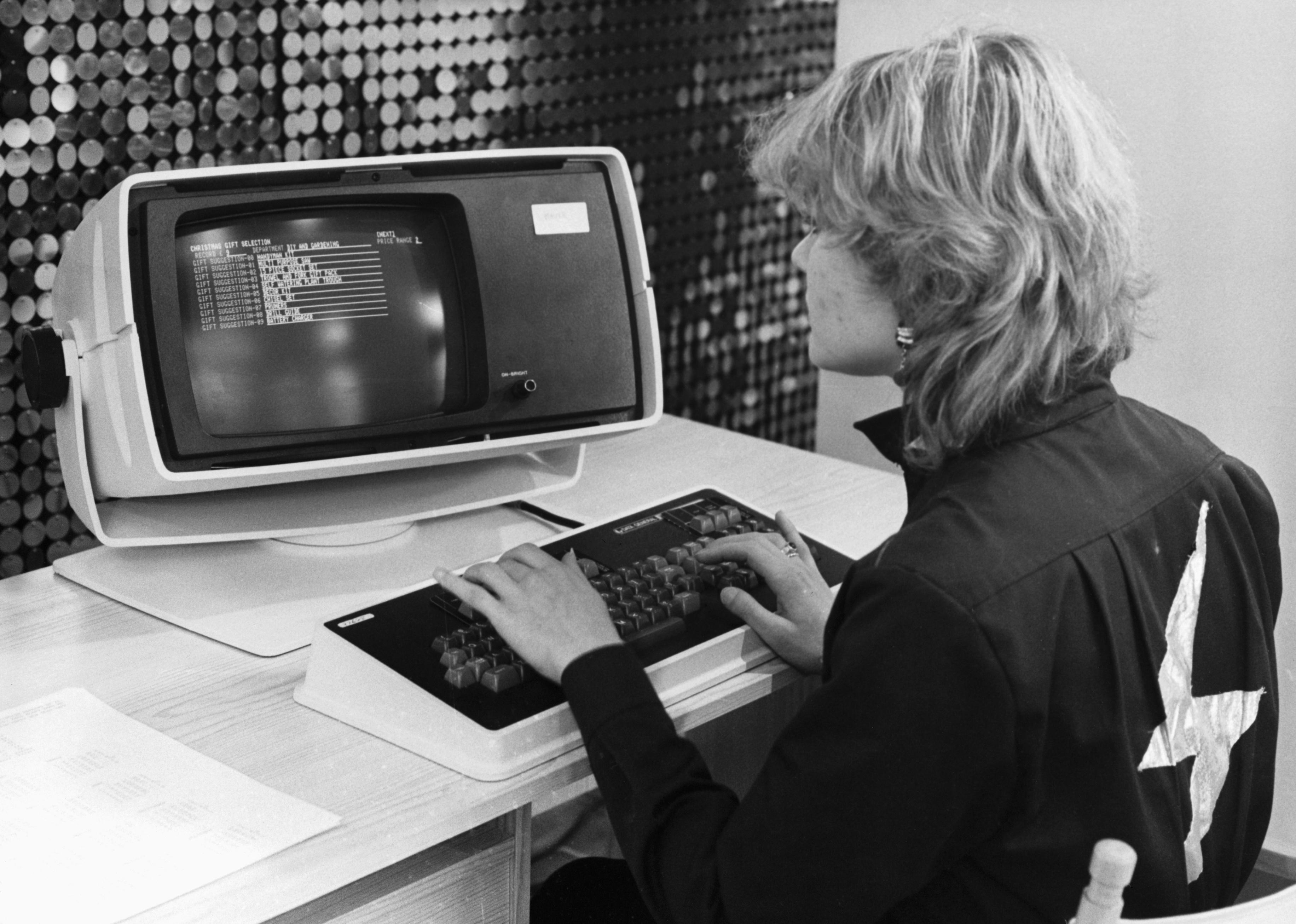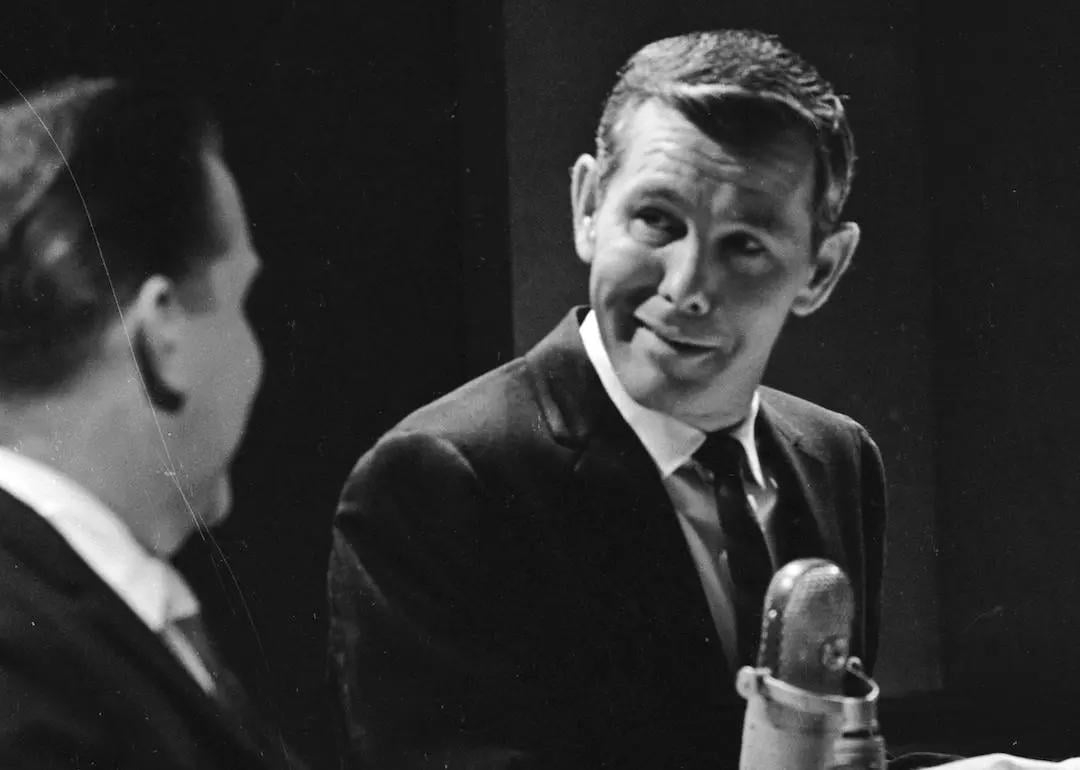
This story originally appeared on Internet Service Providers and was produced and distributed in partnership with Stacker Studio.
Major milestones from internet history
The internet we use today is almost unrecognizable compared to what consumers first saw in the early 1990s, let alone what engineers and programmers saw for two decades before that in government and university networks. Internet Service Providers compiled a list of 20 of the most important milestones from internet history, narrowed down from a candidate list that included dozens from sources Thomas Jefferson University and the Internet Hall of Fame.
This list is limited to strict internet-only landmarks beginning with the invention of the modem, but the antecedents for the internet began a century before with telecommunications technologies like the telegram, the teletype, and telephotography. Yes, the early dial-up internet ran on telephone wires, but even the twisted cable pairs inside our Ethernet cables date back to Alexander Graham Bell.
Before the first computer networks, each computer terminal stood alone and was self-contained. Early connections, like the serial bus, helped users turn their single lines of computer terminal code into something that could print from a teletype machine or later dot-matrix printers. Indeed, linking devices together helped make all of them more powerful and, like the first simple telephone call a century before, helped users realize their goals in the blink of an eye.
As networks grew out of specific government facilities or university computer departments, they began to connect on a wider scale. Giant cables, like early telegraph cables laid beneath the world’s oceans, once again connected disparate nations and continents until the entire world was linked.
The work of programmers and network technicians—who worked to design protocols, or hardware and software mechanics—was incredibly important and it meant all the computers were actually communicating with each other in a language they could all understand. From the first email message to the first consumer web browser to the dawn of Facebook, nothing will ever be the same as it was before the internet.
The first modem
In 1958, Bell Labs made the first modem, continuing the company’s long legacy since founder Alexander Graham Bell patented the first telephone. The modem converts signals from a computer into signals over the same kinds of wires that were used to transmit telegrams and telephone calls, hence the early dial-up internet that shared phone lines.
[Pictured: An old dial-up modem where a phone handset sits in the modem cradle.]
The first link between two faraway computers
Computer scientists used modems and emerging “data packet” technology in 1965 to link two computers from Massachusetts to California. The modem helped to communicate the computer data, but scientists had to develop a protocol for passing chunks of information that could be fully reassembled into data on the other side and let it pass both ways.
Email technology is invented
In 1972, programmer Ray Tomlinson made the first version of what we now know as email, including choosing the @ symbol as the separator for the user’s handle and their “domain” area. At the time, people were still using the government’s Advanced Research Projects Agency Network system, or ARPANET, and the second portion of the address referred to their specific computer.
[Pictured: The first ARPANET email was sent between these two adjacent PDP-10 computers at BBN Technologies.]
Ethernet is invented
Experts at tech juggernaut Xerox invented what became Ethernet technology in 1973, when Robert Metcalfe and colleagues explored how to best connect “a roomful of computers.” Ethernet cabling uses unshielded twisted pairs of individual tiny cables, which were invented nearly a century before by Alexander Graham Bell.
First version of TCP/IP technology
In 1973, computer scientists Vinton Cerf and Robert Kahn began developing a full solution for a problem in computer networks. Their series of structures and failsafes were designed to make sure one outage wouldn’t take down a whole network, and later its two parts were known as transmission control protocol and internet protocol, or TCP/IP.
First use of 'Internet' and service provider
Computer scientists Vinton Cerf and Robert Kahn used the term “Internet” for the first time in a paper about data protocols in 1974. That same year, the first commercial version of the ARPANET service, a private network called Telenet, launched for customers.
NSFNET & CSNET
In 1985, Stephen Wolff launched the National Science Foundation Network, called NSFNET for short, which allowed universities to get onto the nascent internet. The network expanded and empowered the NSF’s previous Computer Science Network (launched in 1981) for computer science departments.
First domain service and registered domain
In 1983, the first domain name registry opened, and in 1985, the first official commercial domain was registered for Symbolics.com, a computer systems company. Assigned domains dated back to the 1970s in their number forms, and a new technology called the domain name system (DNS) both monitored all the number addresses behind domain names and ensured redundancy in case one or more of the DNS servers went down.
First search engine idea
Developer Alan Emtage conceived of the first search engine, Archie, in 1989, which may have started another long-term internet trend: removing one letter from a proper name, in this case turning “archive” into Archie. The service compiled filenames into a searchable database across the network.
Tim Berners-Lee invents the 'World Wide Web' and HTML
In 1989, computer scientist Tim Berners-Lee invented the World Wide Web, which created the full experience of text that interlinks with other text (hypertext) and the set of standards that pass that hypertext back and forth to a web browser (hypertext transfer protocol, or HTTP). Berners-Lee later founded the World Wide Web Consortium, which still monitors and teaches web standards today.
Founding of the Electronic Frontier Foundation
The experiences we have with invasive technology and loss of privacy seem unique to the modern internet, but the activist legal aid group Electronic Frontier Foundation was founded in 1990 out of concern for the same things. The EFF continues to push back against intrusions on user privacy; they’re celebrating their 30th anniversary this year.
[Pictured: Portrait of John Perry Barlow, oneof the founders of the Electronic Frontier Foundation.]
First public internet access
Like Facebook did more than a decade later, internet access rolled out first to universities and later to the public. In 1991, the first totally public consumer internet service emerged with early services like Prodigy or CompuServe that adapted services they previously offered to universities and government. The AMC series “Halt and Catch Fire” is set among these (fictionalized) early networks.
Invention of the Mosaic web browser
In 1993, the National Center for Supercomputing Applications, or NCSA, released the first mainstream graphical web browser. This marked a change from web applications that used only text, which were harder to distinguish from technologies like bulletin board systems.
The first compressed audio MP3 file
In 1995, Karlheinz Brandenburg invented a new version of an MPEG audio file that he decided to call MP3. This format collapsed huge audio files to a 10th or even less of their original size, making them easier to send across the internet of the mid ‘90s.
Java and Internet Explorer
In 1995, internet veterans Sun Microsystems released the very first version of Java, a programming language and platform that allowed the internet to host platform-neutral interactive features and multimedia. Microsoft released Internet Explorer the same year, creating a one-two punch of powerful home internet capability.
Founding of the Internet Archive
Programmer and engineer Brewster Kahle launched the influential Internet Archive in 1996. The nonprofit archive’s mission is to capture and store web pages so they aren’t lost to the ether. It also hosts defunct (and playable) computer games, public domain and creative commons film and music, and much more—all for the public good.
[Pictured: Brewster Kahle at the Internet Archive, Jan. 19, 2012.]
Google revolutionizes internet search
In 2020, Google dominates the public imagination to an extent that it’s hard for many people to imagine daily life without Google. Before the company’s founding in 1998, web search and navigation was quite different. Google’s first iterations were clean, sleek, and only focused on search instead of as an added function to popular landing portals like Yahoo.
[Pictured: Google cofounders Larry Page and Sergey Brin.]
Napster popularizes file sharing
The cofounders of Napster, Shawn Fanning and Sean Parker, put their platform online in 1999 as a way for users to connect with each other directly in order to share files. By avoiding the interim step of hosting files on a server, they both reduced the total transit time and forecasted the “cloud” internet we rely on so much today. They also got into massive, groundbreaking legal trouble.
The first RSS feeds
Activist and technology advocate Aaron Swartz helped invent the RSS feed in 2000, allowing users to “subscribe” to the update feeds of pages they liked and changing the way people browsed the internet. This technology continued paving the way for dynamic rather than static web pages, where content is made of pieces that slide together in a templated format that’s easy to identify and update.
[Pictured: Aaron Swartz in Cambridge, Massachussetts, Aug. 31, 2007.]
Facebook introduces modern social networks
In 2004, Mark Zuckerberg put the very first iteration of Facebook online. There were primitive social networks before Facebook, but in hindsight these all seem like necessary steps that would not survive the Facebook age. Indeed, Facebook relied on most of the previous “milestones” in this list in order to become a behemoth of modern life.



